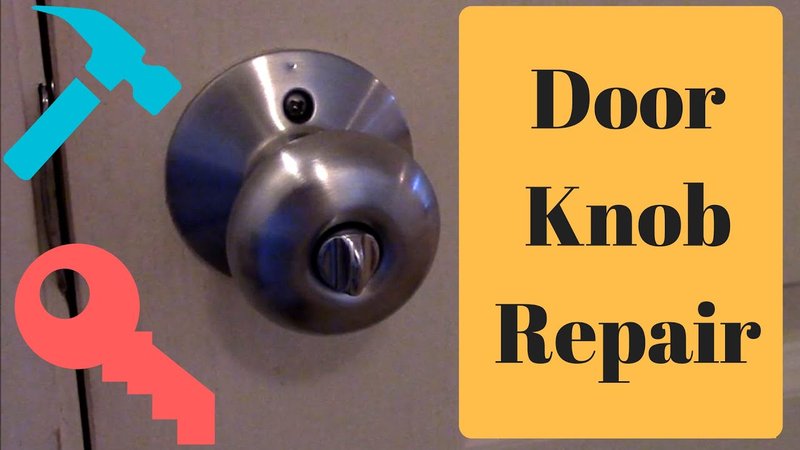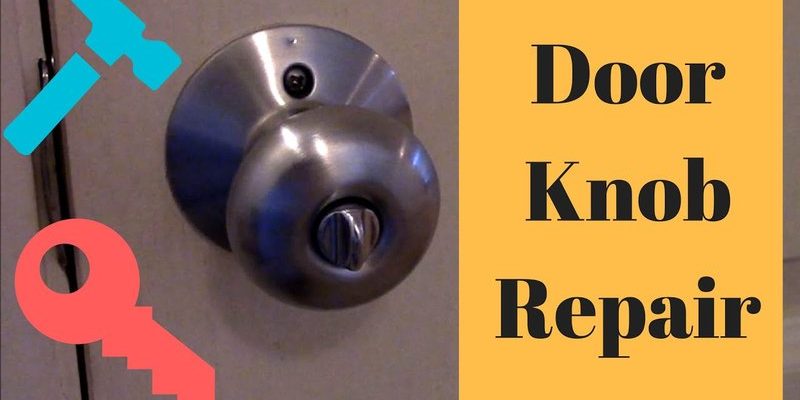
Just like a pesky gadget that demands your attention, a sticking door knob can vary from a minor annoyance to a full-blown problem. Luckily, understanding why this happens can make a world of difference. So, grab a cup of coffee, and let’s dive into the mechanics of door knobs and what might be causing yours to act out.
Common Reasons for a Sticking Door Knob
There are several reasons your door knob might be sticking, and understanding these can help you troubleshoot easily. Most often, it boils down to a few key issues: dirt buildup, misalignment, or wear and tear. Let’s break these down.
Dirt and Debris Buildup
Over time, dust, grime, and even pet hair can accumulate around the door knob and inside the mechanism. Just like a computer that slows down when overloaded with files, a door knob can struggle to function properly with all this debris in the way. If you notice that your knob sticks after a certain period of non-use, dirt might be the culprit.
To fix this, try cleaning around the knob and the latch. You might be surprised at how much smoother it operates afterward. Use a damp cloth and a gentle cleaning solution to wipe the surface. You can also use compressed air to clear out debris inside the mechanism.
Misalignment of the Door or Knob
Another common reason for sticking door knobs is misalignment. Think of it like a car that’s out of alignment; it can become difficult to steer. If your door is slightly off its hinges, the latch may not align correctly with the strike plate. This can cause resistance when turning the knob.
To check this, observe whether the door sits evenly in the frame. If you notice gaps or unevenness, it might be time to adjust the hinges. Grab a screwdriver and tighten any loose screws or consider repositioning the hinges slightly to encourage proper alignment.
Wear and Tear on the Mechanism
Eventually, even the best door knobs can succumb to wear and tear. If your knob is older, the internal parts may wear down, causing the mechanism to stick. Just like any mechanical device, a door knob’s moving parts can degrade over time.
If you suspect that the mechanism is the issue, you may have to disassemble the knob to examine its internal workings. Look for worn-out springs, or broken components. In some cases, a simple lubrication might get that knob turning smoothly again.
How to Lubricate Your Door Knob
If dirt and wear are at play, lubrication might be the magic remedy. Here’s how you can do it properly:
1. Buy the Right Lubricant: Use a silicone-based lubricant or graphite powder. Avoid oil-based products like WD-40, which can attract more dirt over time.
2. Remove the Knob: Unscrew the knob from the door. Be careful to keep track of all pieces—this isn’t a jigsaw puzzle you want to lose parts of!
3. Apply the Lubricant: Spray or sprinkle the lubricant directly onto the moving parts of the knob.
4. Reassemble and Test: Put everything back together, and give it a turn. If it feels smoother, congratulations—you’ve just repaired your knob!
When to Replace Your Door Knob
If you’ve gone through the troubleshooting and cleaning process but your door knob still sticks, it might be time for a replacement. Here’s what to consider:
– Age of the Knob: If the knob is old and has seen better days, replacing it might be more cost-effective than trying to fix it.
– Cost of Repair vs. Replacement: Sometimes, hiring a handyman to fix a sticky knob could end up costing more than just getting a brand new one.
– Type and Style: When replacing, consider whether you want to upgrade your style. A modern knob can enhance your home’s aesthetics while functioning beautifully.
Choosing the Right Replacement Knob
When it comes to selecting a new door knob, you might feel overwhelmed with options. Here’s a quick guide to help you choose wisely:
– Functionality: Decide if you want a privacy knob for a bathroom or a passage knob for a hallway. Understand the function you need.
– Style: From sleek modern designs to rustic finishes, select a style that matches your home decor.
– Material: Look for durable materials like brass or stainless steel for longevity.
Preventing Future Issues
Now that you’ve tackled the sticking issue, let’s ensure it doesn’t come back. Regular maintenance is key. Here are some quick tips:
– Clean Regularly: Take a moment to wipe down your knobs and check for dirt buildup monthly.
– Inspect Hinges: Occasionally check your door hinges and screws. Tightening them can prevent misalignment.
– Lubricate Annually: Consider a yearly lubrication routine to keep everything moving smoothly.
A sticking door knob can disrupt your day more than you’d think. But understanding why your interior door knob sticks when turning can turn that frustration into an easy fix. Whether it’s cleaning out dirt, adjusting misalignments, or even replacing an old knob, you have the tools you need to tackle this common household problem. So, the next time you face a stubborn knob, remember these strategies, and you’ll be back to opening doors with ease in no time!
